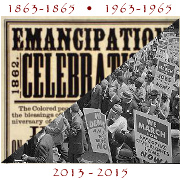Office holiday parties aren’t as good for diversity as you might think
Posted December 11th, 2013 by James DeWolf PerryCategory: Living consequences Tags: Cultural competence, Diversity, Workplace trainings
 Diversity experts often recommend that employers foster a variety of behaviors in racially diverse workplaces aimed at bringing employees closer together. These techniques can include hosting social gatherings and encouraging the informal sharing of personal information, and are intended to overcome racial and sociocultural barriers and to strengthen interoffice relationships.
Diversity experts often recommend that employers foster a variety of behaviors in racially diverse workplaces aimed at bringing employees closer together. These techniques can include hosting social gatherings and encouraging the informal sharing of personal information, and are intended to overcome racial and sociocultural barriers and to strengthen interoffice relationships.
At this time of year, the office holiday party is the best example of this sort of practice aimed, at part, at addressing issues of diversity in a positive, proactive way.
Yet research from the Columbia Business School indicates that social interactions at work, rather than promoting racial harmony and cooperation, are ineffective at reducing discomfort and racial tension in the workplace, and can further isolate employees based on racial difference.
This research doesn’t mean that employers should avoid hosting holiday parties and encouraging other forms of socializing, but it does suggest that these events can be problematic, and that attention is better paid to an organization’s attitude towards issues of diversity and towards ensuring positive experiences for all employees, while working and while socializing with co-workers.
The research no one had done
Writing in the journal Organization Science this fall, Professor Katherine Phillips of Columbia, along with Professor Tracy Dumas of Ohio State University and and Professor Nancy Rothbard of the Wharton School, note that employers are often advised to offer workplace social events and to encourage employees to attend, in order to manage diversity and bridge racial gaps. This advice goes hand-in-hand with similar techniques for improving workplace relationships, such as sharing personal information at work, bringing family members to organizational gatherings, or other “team-building” activities.
There are several reasons for this common advice to include “integration activities” in the workplace. One theory, which applies outside of the diversity context as well as in it, is that blending employees’ personal and professional lives can help strengthen their relationships to one another, and to the organization. Another argument is that employee diversity tends to lead to conflict, lower cohesion, and poor communication among co-workers; increased social contact and, in particular, the sharing of personal information, is believed to reveal unexpected similarities, reduce racial prejudice, and bring racially dissimilar co-workers closer together.
Yet no one seems to have bothered to investigate whether this advice on managing diversity actually improves workplace relationships.
What actually happens during workplace social encounters
In their paper, “Getting Closer at the Company Party: Integration Experiences, Racial Dissimilarity, and Workplace Relationships,” the authors conducted two studies to examine the impact of social interactions in the workplace. The studies asked employees about their experiences with such integrative activities as attending company social occasions, bringing family members to such occasions, organizational team-building activities, and discussing personal information with colleagues, and about the long-term impact of these activities.
The results were shocking. Co-workers of similar racial backgrounds were brought closer together by social gatherings and other “team-building exercises,” but for those of different racial backgrounds, the impact of these events was often to increase feelings of discomfort and racial separation.
Those employees who were not racially similar to most of their colleagues tended to report feeling pressure to attend unpleasant social gatherings, believing that their standing at work and even their performance reviews were at stake. They described the events themselves as highlighting, not overcoming, racial differences between themselves and their co-workers.
Why do employees tend to feel more isolated from the racial majority after attending workplace functions? The authors suggest that part of the answer may simply be that these occasions reveal personal information that actually highlights racial differences, rather than suggesting unexpected similarities. For instance, sharing with colleagues about personal tastes in music can emphasize racial and cultural differences, and increase overall feelings of separation from co-workers and isolation in the workplace.
Moreover, when individuals are already primed to believe in racial difference, there is a psychological tendency to magnify information which confirms difference, and to minimize or ignore information which suggests similarity. This phenomenon suggests that revealing personal information, including both similarities and dissimilarities, is likely to make employees see themselves as more isolated along racial lines than before (unless other steps are taken to mitigate this effect). Even just listening to information about others, the authors argue, may increase a racially dissimilar employee’s sense of difference and isolation in the organization.
What can employers do?
The take-away lesson here is not that interpersonal contact among employees, the sharing of personal information, or the process of socializing together is necessarily bad.
Instead, the authors of this study posit that employee experiences while engaging in these activities are critical. This often means that employees must already have positive relationships with co-workers, or at least have experienced rewarding interactions, in order to be brought closer together, rather than pushed apart, by the types of integrative behaviors discussed here. There is also the possibility that for many employees who are marginalized on account of race, their interactions at social occasions may be more likely to be strategic, aimed at managing perceptions or preserving their professional status, or because of external pressure, and less likely to be about relaxing and enjoying personal time with co-workers.
Thus we can see that merely encouraging employees to socialize, to share, or to engage in team-building activities is not enough, and may even be damaging to interracial relationships in the workplace. Employers must first engage in deliberate practices to lay the groundwork for these kinds of interactions in a racially diverse workplace.
This means ensuring that racially diverse employees are not participating in social interactions out of a sense of obligation, and are not approaching those interactions strategically, but already have a certain degree of comfort with co-workers who are in the racial majority. This sense of relative comfort need not have arisen out of natural social interaction, but can come from diversity training aimed at promoting cross-cultural understanding. The key is that diversity training must provide positive interactions with co-workers and ensure that employees know, from personal experience, that they will feel heard in their conversations with co-workers, and that they know how to respond appropriate to those who are racially different from them. Employees will also benefit from training to help ease the likelihood of inter-group miscommunication over such social interactions as forming friendships.
As for employers, they can benefit from advice on how to sponsor social activities where employees will have positive experiences, as well as information on how to establish an organizational culture where individuals can feel safe and respected for what they can contribute.
Employers can also respond to the difficulties of improving employee relationships in racially diverse workplaces by emphasizing not social interaction, or blending personal and professional lives, but strategies aimed at increasing group cohesion through work-based strategies. These strategies are often familiar outside the diversity context, and can include emphasizing task clarity and focus and enhancing a sense of group efficacy. These approaches, when combined with careful attention to the pitfalls inherent in diverse workplace settings, can help build better working relationships even when improved social interaction is not the answer, at least not before a stronger foundation is laid for positive social encounters.



December 19th, 2013 at 5:37 am
[…] Office holiday parties aren’t as good for diversity as you might think […]